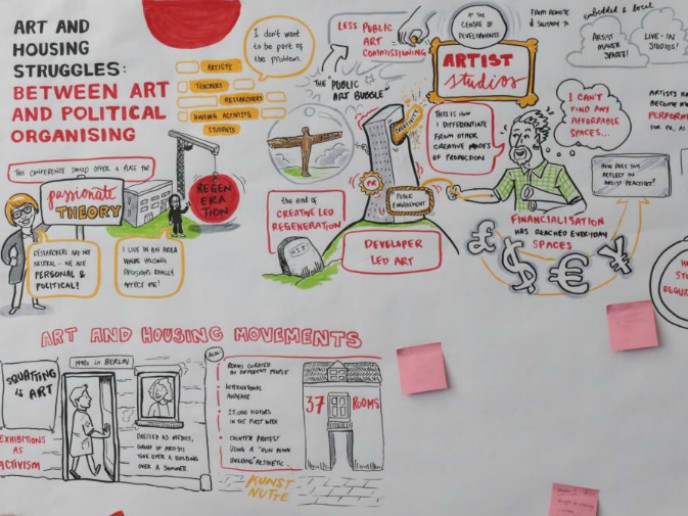Housing crisis impacts art practice and production
The HOUSREG project “questioned the role of socially engaged art within the framework of housing crises in Europe,” notes project coordinator Dr Elena Marchevska. The work focused on Belgrade in Serbia and London in the United Kingdom. Dr Ana Vilenica, a Marie Skłodowska-Curie fellow funded under this grant, carried out a one-year in-depth study of property guardian schemes for artists in London. Dr Vilenica elaborates: “Artists sign up to be guardians for a vacant property, and at the same time are requested to create a participatory artistic work that is supposed to benefit the community.” While this provision of living/working accommodation enables artists to rent at lower-than-market prices, this situation is a good example of housing precarity. The set-up comes at another price: the artists are deprived of tenants’ rights. HOUSREG argues that property guardianship presents deep discomfort and frustration for these individuals. “Artists are torn between the necessity of surviving within an unaffordable housing market and the wish to make art in an uncompromised way,” Dr Vilenica states. Mapping artists and their relations During the fieldwork, the fellow developed a research method based on mapping the actors and their relations through hand-drawn relational maps. To validate this new theoretical approach, Dr Vilenica conducted comparative case studies in the United Kingdom and Serbia. These focused on best practices of culture-led housing regenerations: Balfron Tower in London, and Sava Mala neighbourhood in Belgrade. “The results show significant differences on the meta level, especially regarding the involvement of art in housing regeneration,” she says. On the mezzo level, both studies revealed “an aggressive and imposing new narrative led by the state and private property developers.” Finally, on a micro level, the work identified in both cases conflicts between art practitioners and tenants. Impact of housing precarity on artwork Research conducted over the 2-year project established that artists have experienced increased housing precarity. At the same time, their art practice has been functionalised within the process of welfare degradation and privatisation of housing. Some of the most significant findings were based around complex networks formed of multiple actors. These include the European Union, council authorities, activists’ groups, residents and artists. At the same time, “HOUSREG gained new knowledge on how the relationships between these actors influence the outcome of the artwork, and what kind of new relations are produced through these interactions.” Connecting art and housing Through her novel interdisciplinary approach, Dr Vilenica has helped to establish a new field of research connecting art and housing. Introducing less-known work from an East European context into wider academic and artistic discussions has also brought forward knowledge about less visible post-socialist cities. This has created a network of international thinkers and practitioners ready to bridge the East-West divide in knowledge production. Outreach and dissemination included the roundtable series ‘Housing and Regeneration Struggles in South London’ and the international conference ‘Art and Housing Struggles: between art and political organising’. The team has presented various aspects of HOUSREG work at different events in eight countries. Drs Marchevska and Vilenica are currently preparing an edited volume, ‘Art and Housing Struggles’, slated for publication in 2019. They are also collaborating on an international networking project that will continue the discussion between the United Kingdom and Serbia. This work uses socially engaged art practice to understand the complex intersection between forced migration and new placemaking strategies.
Keywords
HOUSREG, art, artist, housing precarity, housing crisis, socially engaged art, housing regeneration, property guardian scheme



